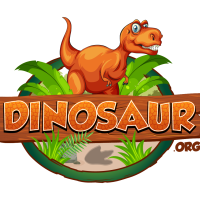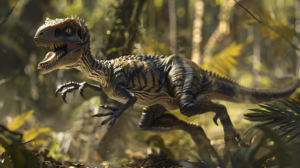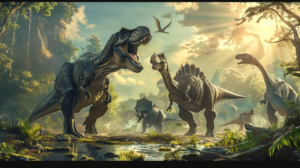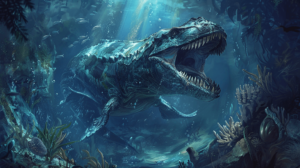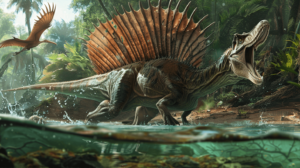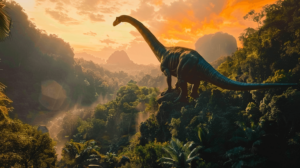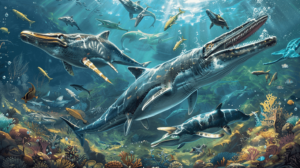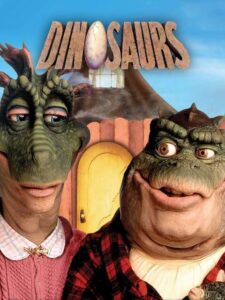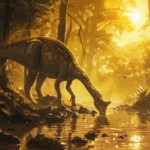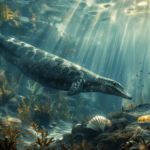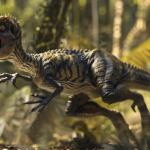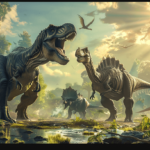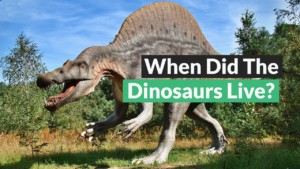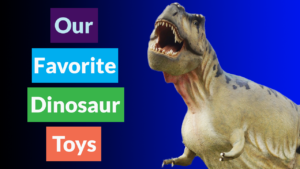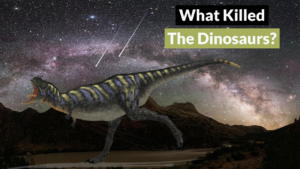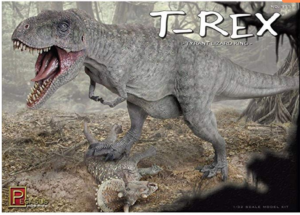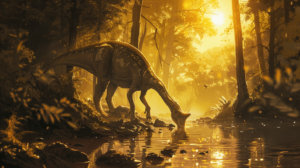
Parasaurolophus Guide
Table of Contents
Toggle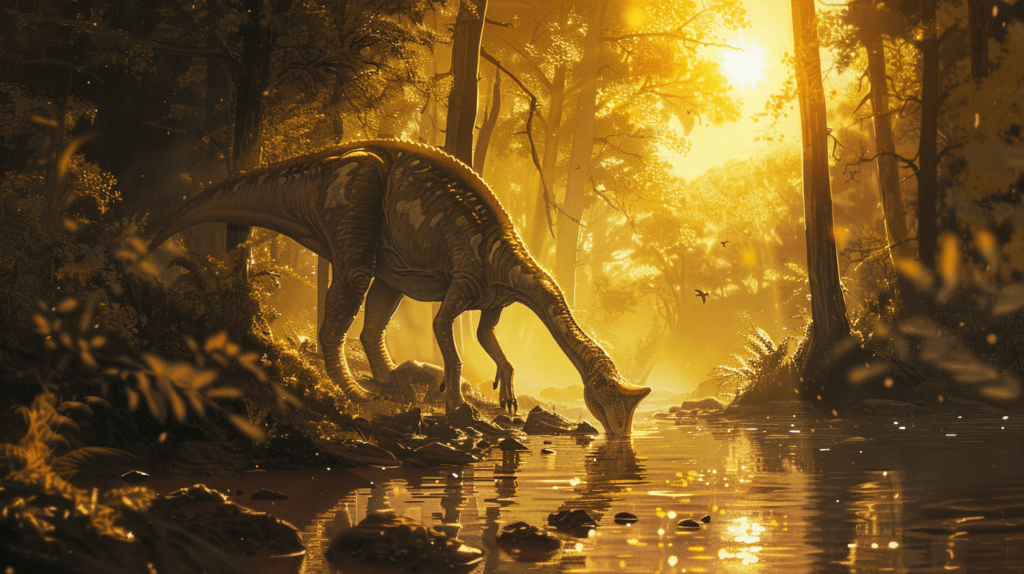
Parasaurolophus
Parasaurolophus, discovered in 1920, quickly stood out with its long, distinctive crest. This “near crested lizard” roamed North America, making homes from Alberta to New Mexico. It walked on two or four legs, reaching lengths up to 30 feet. Besides its impressive size, its crest played roles in communication, possibly even temperature regulation. Feeding on plants, Parasaurolophus used its beak and numerous teeth to grind tough foliage. They thrived in herds, providing protection against predators. This herbivore’s habits, distinct appearance, and the mysteries of its crest have fascinated scientists and enthusiasts alike, offering glimpses into a world long gone. There’s much to uncover about this magnificent creature.
Discovery and Naming
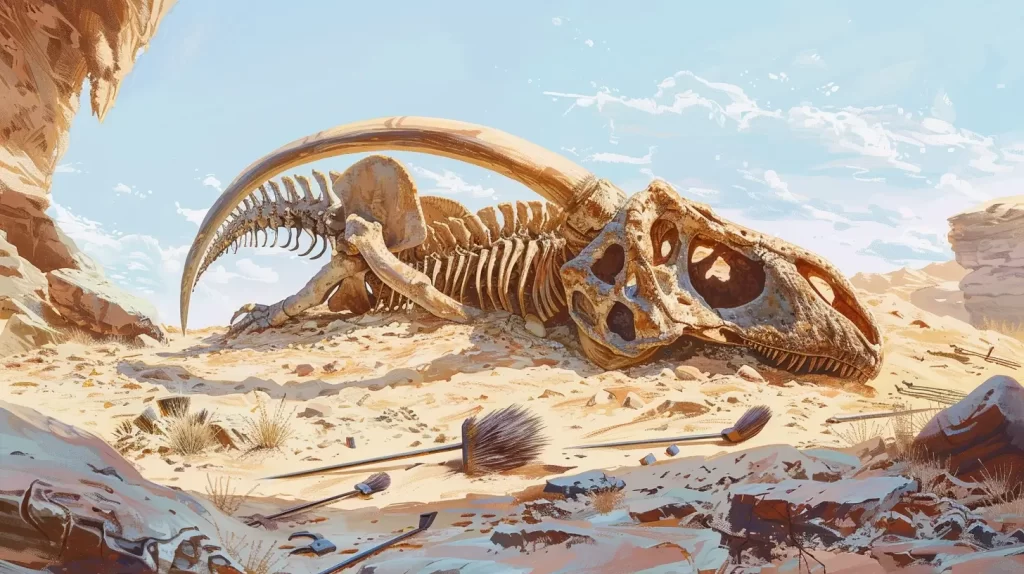
The discovery of Parasaurolophus, a dinosaur known for its unique crest, began in 1920 when the holotype ‘P. walkeri’ was unearthed in Alberta. This significant find marked the first introduction of Parasaurolophus to the scientific community, establishing ‘P. walkeri’ as the reference point for the species. The name Parasaurolophus, translating to ‘near crested lizard’ in Greek, aptly describes this dinosaur’s most distinctive feature. Following this initial discovery, additional species within the Parasaurolophus genus have been identified, expanding our understanding of this fascinating dinosaur.
In 1931, a second species, ‘P. tubicen’, was described from fossils found in New Mexico. This discovery further highlighted the geographic range of Parasaurolophus, extending its known habitat from the cooler climates of Alberta to the warmer regions of New Mexico. The ‘P. tubicen’ specimens provided more insights into the variety within the Parasaurolophus crest structures, suggesting a diversity in appearance and possibly behavior among different species.
Another leap in our knowledge came in 1961 with the naming of ‘P. cyrtocristatus’, also from New Mexico. This species, distinguished by variations in its crest, underscored the adaptability and evolutionary nuances of Parasaurolophus. Each species, from ‘P. walkeri’ to ‘P. cyrtocristatus’, has contributed to a richer, more complex picture of how these dinosaurs lived, interacted, and thrived during the Cretaceous period.
The systematic uncovering of Parasaurolophus species, from Alberta to New Mexico, underscores the importance of paleontological research in piecing together the history of life on Earth. Through these discoveries, the Parasaurolophus continues to captivate and intrigue scientists and dinosaur enthusiasts alike.
Physical Description
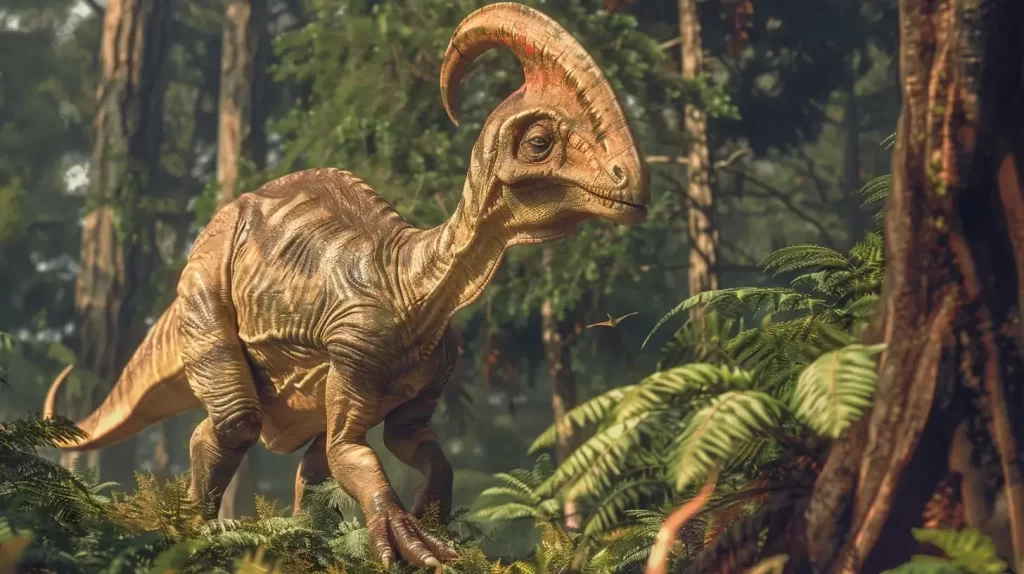
Sporting a distinctive long, vital crest, Parasaurolophus stood out among its dinosaur counterparts due to its unique physical features. This hadrosaurid, a group known for their duck-billed dinosaurs, roamed North America during the Cretaceous period. As a herbivore, its diet primarily consisted of plant material, which it efficiently processed with its distinctive beak. The beak, much like that of modern-day birds, was essential for its survival, allowing it to nip and tear through tough vegetation.
Parasaurolophus’s ability to walk on both two legs and four legs provided it with a versatile means of locomotion. When browsing for food, it likely moved on all fours, bringing its body closer to the ground for easier access to low-lying plants. However, when the need arose, such as escaping predators or perhaps during social displays, it could rear up and sprint on its hind legs. This bipedal stance not only offered speed but also might’ve been used to access higher vegetation.
Fossils unearthed in regions like Alberta, New Mexico, and Arizona have given scientists valuable insights into this dinosaur’s existence. Measuring up to 30 feet in length, Parasaurolophus wasn’t the largest dinosaur of its era, but its size was still formidable. The crest, aside from its potential functions that won’t be discussed here, contributed to its height, making it one of the more recognizable silhouettes in the dinosaur world.
The physical characteristics of Parasaurolophus, from its herbivorous diet to its unique locomotion and the unmistakable crest, paint a picture of a fascinating creature that thrived millions of years ago.
Crest Functions
Parasaurolophus’s distinctive crest, a subject of much scientific curiosity, likely played a significant role in communication and possibly even in temperature regulation. The variations in crest size and shape among different species suggest an evolutionary adaptation for specific functions. These crests, extending from the back of their skulls, weren’t just for show. Scientists believe they were instrumental in producing low-frequency sounds, important for communication within the species. This ability to generate unique sounds might’ve facilitated intra-species recognition, allowing Parasaurolophus to identify one another across the vast expanses of their Cretaceous habitats.
The hypothesis that the crest served a dual purpose is supported by evidence pointing towards a thermoregulatory function. The intricate network of passages within the crest could have allowed for heat exchange, helping these dinosaurs regulate their body temperature amidst fluctuating environmental conditions. This thermoregulatory function, coupled with the crest’s role in communication, underscores the complexity of Parasaurolophus’s adaptation strategies.
Moreover, the variation in crest structure across different Parasaurolophus species highlights the diversity within this genus and suggests a nuanced approach to understanding their ecological roles. The evolution of the crest, thus, provides invaluable insights into the social and environmental dynamics that shaped the lives of these fascinating dinosaurs. Through a combination of improved hearing abilities and the production of low-frequency sounds, the crest of Parasaurolophus exemplifies the intricate relationship between form, function, and survival in the Mesozoic era.
Habitat and Distribution
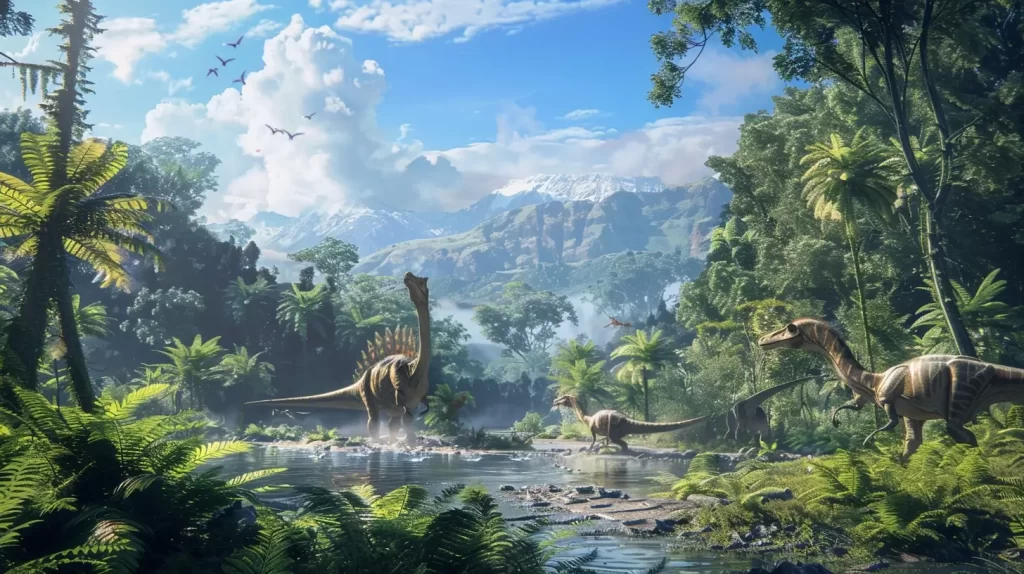
Within the vast landscapes of western North America and possibly Asia, Parasaurolophus thrived during the Late Cretaceous period. This remarkable dinosaur, known for its unique cranial crest, made its home in regions that are today known as Alberta, New Mexico, and Utah. Its distribution highlights the wide range of environments these hadrosaurids could adapt to, showcasing their resilience and versatility.
The habitat of Parasaurolophus was mainly swampy environments close to the shore. These areas provided the necessary resources for their survival and flourishment. Such marshy environments were abundant in the Late Cretaceous, offering a lush, water-rich landscape that supported a diverse range of flora and fauna. Parasaurolophus, being one of the rarer hadrosaurids, found these conditions ideal, allowing them to thrive alongside other dinosaurs and prehistoric creatures.
Moreover, the potential presence of Parasaurolophus in Asia, indicated by the discovery of the closely related dinosaur Charonosaurus, suggests a broader distribution than initially thought. This connection between Parasaurolophus and Charonosaurus hints at a shared habitat preference, possibly extending the range of these dinosaurs beyond the confines of western North America.
Despite being considered rare with few good specimens, the findings in Alberta, New Mexico, and Utah provide invaluable insights into the distribution and habitat preferences of Parasaurolophus. These discoveries contribute significantly to our understanding of the varied ecosystems that existed during the Late Cretaceous and the dinosaurs that inhabited them.
Diet and Feeding Habits
To sustain its massive size, Parasaurolophus relied on a diet composed entirely of plant material. This herbivorous dinosaur utilized a specialized set of tools to process its food, ensuring it met its energy requirements efficiently. With a beak designed to crop the toughest of plant matter, Parasaurolophus could easily access a wide range of vegetation available in its habitat. This initial cropping was the first step in a complex feeding process.
After gathering plant material, the dinosaur employed its specialized teeth in a grinding chewing motion, a technique essential for breaking down fibrous plant tissues. Parasaurolophus had hundreds of these specialized teeth, arranged in such a way that as they wore down, new teeth would replace the old, ensuring the dinosaur was always equipped to process its plant-based diet. This continual renewal of teeth was vital for maintaining their ability to consume a variety of leaves, twigs, and even pine needles, which constituted a large part of their diet.
The dinosaur’s feeding habits were perfectly adapted to its large size. The energy demands of such a massive creature meant that it had to consume large amounts of plant material daily. By efficiently processing tough plant matter, Parasaurolophus could extract the maximum amount of nutrients from its environment, supporting its energy requirements and contributing to its survival in the Cretaceous period. This effective adaptation to its herbivorous diet was an essential factor in the dinosaur’s ability to thrive.
Behavior and Social Structure
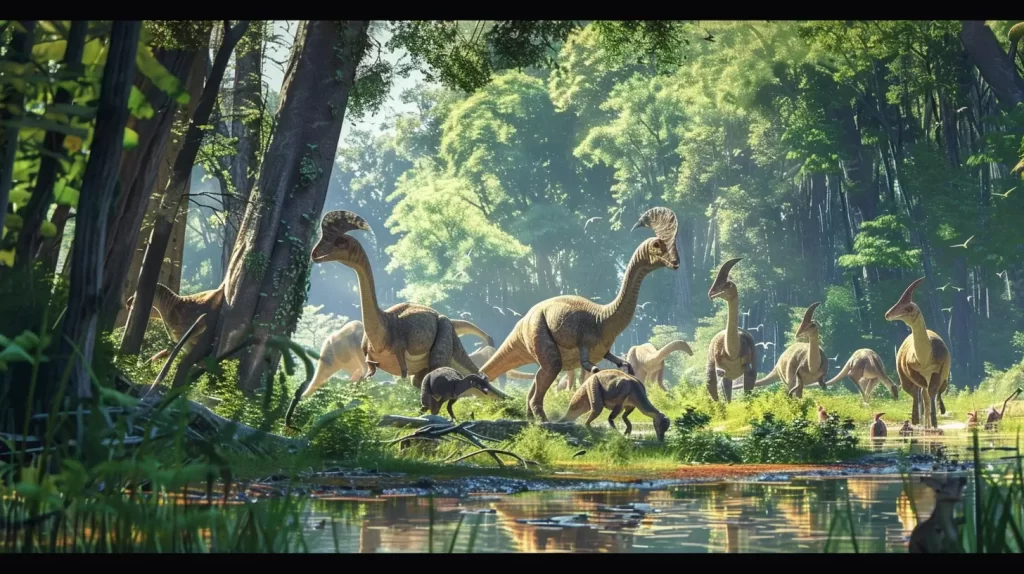
Parasaurolophus herds often gathered in various landscapes, showcasing their social and pivotal nature. As an essential member of the hadrosaurs family, these dinosaurs thrived in grasslands and forests, finding safety and sustenance in numbers. Unlike some of the more solitary creatures of the dinosaur kingdom, Parasaurolophus demonstrated a strong inclination towards forming groups. This social structure not only provided them with protection against predators but also facilitated a nurturing environment where injured members received collective care.
In instances where a Parasaurolophus was found alone, it displayed territorial behavior. This was likely a mechanism to establish boundaries and resources as their own, ensuring they’d access to ample food and water without direct competition. However, the strength of their social bonds was most apparent when they came together. These herds weren’t just about survival; they reflected a complex social structure that prioritized the well-being of each member.
When faced with predators, Parasaurolophus herds didn’t just scatter in panic. Instead, they demonstrated coordinated defensive behaviors, leveraging their numbers and the protective environments of forests and grasslands to their advantage. This not only underscores their intelligence but also their ability to work collectively in the face of danger.
Understanding the behavior and social structure of Parasaurolophus offers a glimpse into the life of these ancient giants. Their existence wasn’t merely about survival but also about forming connections and thriving together in the prehistoric world. Through their herds, they navigated the challenges of their era, leaving a fascinating legacy in the annals of dinosaur history.
Fossil Record
The fossil record reveals that Parasaurolophus thrived in western North America during the Late Cretaceous period. This hadrosaur, recognized by its distinctive cranial crest, left behind a significant trail of evidence, allowing scientists to piece together aspects of its existence. Specimens of Parasaurolophus have been unearthed in regions such as Alberta, New Mexico, and Utah, highlighting the dinosaur’s expansive range.
The first species, Parasaurolophus walkeri, was discovered in Alberta in 1920, laying the groundwork for future findings. Subsequent discoveries, including Parasaurolophus tubicen in New Mexico (1931) and Parasaurolophus cyrtocristatus (1961) in the same region, enriched the fossil record, showcasing the diversity within the genus. These finds not only provide insights into the morphology of Parasaurolophus but also its geographic distribution across western North America during the Late Cretaceous.
| Species | Location |
|---|---|
| Parasaurolophus walkeri | Alberta |
| Parasaurolophus tubicen | New Mexico |
| Parasaurolophus cyrtocristatus | New Mexico |
The locations where these fossils were found point to a habitat that spanned a significant portion of western North America. Understanding the fossil record of Parasaurolophus offers valuable insights into the Late Cretaceous ecosystems and the role this hadrosaur played. Through careful study and comparison of these fossils, scientists continue to unravel the mysteries of Parasaurolophus’s life millions of years ago.
Parasaurolophus in Popular Culture
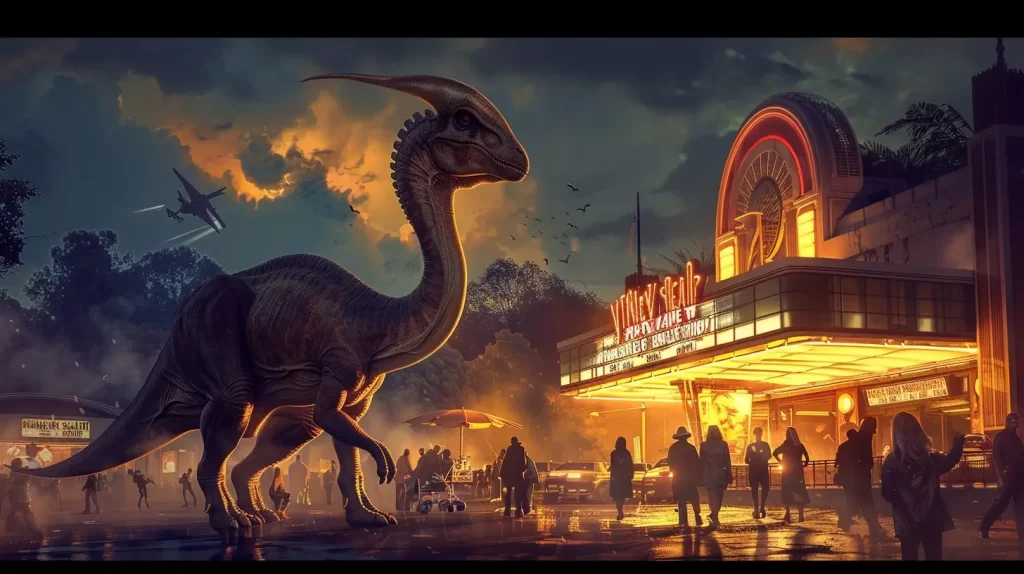
While the fossil record provides a window into the life of Parasaurolophus millions of years ago, its distinctive crest has also captured the imagination of many in films, TV shows, and games. This crested hadrosaurid dinosaur, hailing from the lush landscapes of the Cretaceous period, has left a lasting impression on popular culture with its unique appearance. Often, the Parasaurolophus sound, a hypothetical vocalization based on the structure of its crest, adds an eerie yet fascinating element to cinematic moments, enveloping audiences in the mystique of the Jurassic and Cretaceous worlds.
Dinosaur enthusiasts particularly admire Parasaurolophus for its herbivorous nature and the peaceful imagery it evokes amidst the more ferocious carnivores typically spotlighted in media. Its representation in popular culture goes beyond the silver screen and into dinosaur exhibits worldwide, where its life-sized models and detailed reconstructions attract visitors keen on understanding the natural history of these ancient creatures. The unique appearance of Parasaurolophus, especially its elongated, tubular crest, makes it an iconic figure, easily recognizable and often featured in dinosaur-themed merchandise.
Despite the occasional exaggeration of its crest for dramatic effect, Parasaurolophus remains a favorite among dinosaur aficionados and a cornerstone in the portrayal of prehistoric life. Its presence in popular culture serves as a sign of the enduring fascination with dinosaurs and the desire to connect with the natural world of millions of years ago, reminding us of the rich biodiversity of our planet’s past.
Frequently Asked Questions
How Do You Pronounce Parasaurolophus?
To pronounce ‘Parasaurolophus,’ one breaks it into syllables: ‘par-uh-saw-rah-loh-fus,’ with emphasis on ‘saur.’ This method guarantees clarity, particularly since many struggle with dinosaur names.
Surprisingly, over 17 specimens of this dinosaur, recognized for its distinctive crest, have been found. This pronunciation tip serves enthusiasts and professionals alike, making discussions about this 5056.8 kg herbivore, which roamed North America during the Cretaceous period, more accessible and engaging.
Did Parasaurolophus Live With T. Rex?
Yes, Parasaurolophus shared its habitat with T. rex, indicating they lived at the same time. Fossils from both species have been discovered in regions like Alberta and New Mexico, suggesting their paths crossed.
This coexistence meant Parasaurolophus had to navigate life alongside such formidable predators, likely influencing its behavior and survival strategies. Understanding their interactions sheds light on the complex ecosystems of the Late Cretaceous period, offering insights into these ancient creatures’ lives.
What Is the Difference Between Saurolophus and Parasaurolophus?
The difference between Saurolophus and Parasaurolophus lies mainly in their crest structure. Saurolophus sports a solid headgear, while Parasaurolophus boasts a hollow, tube-like crest.
This unique feature of Parasaurolophus might’ve served various functions, from communication to temperature regulation. Despite both being herbivores and part of the duckbill dinosaur group, their distinct crests and tooth arrangements suggest they’d different diets and social behaviors.
Is Parasaurolophus a Meat Eater?
The question at hand couldn’t be more fascinating, as it dives into the diet of ancient behemoths. Absolutely not, the subject in question wasn’t a meat-eater.
This gentle giant preferred a peaceful meal, munching on leaves, twigs, and even pine needles. Its mouth housed hundreds of teeth, perfectly designed for grinding down plant material.
Unlike the fearsome carnivores of its time, it thrived on a strictly plant-based diet, steering clear of any animal-based snacks.
